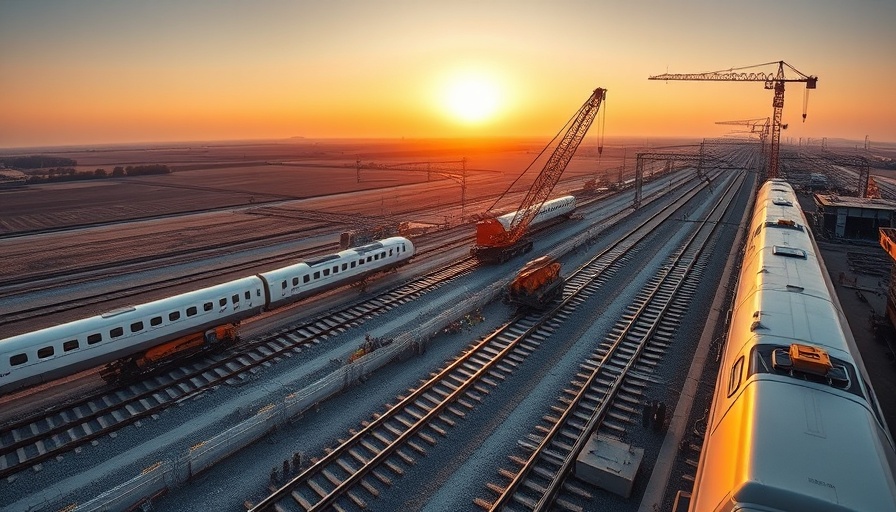
Understanding the Implications of the USDOT Review
The recent announcement by U.S. Transportation Secretary Sean Duffy regarding the California High-Speed Rail Authority (CHSRA) has stirred up significant debate. A review is underway to assess whether the authority can retain about $4 billion in federal funding for the ambitious Los Angeles-to-San Francisco high-speed rail project. The potential clawback of these funds raises critical questions about the future of rail travel in California and beyond.
Current Challenges Facing the California High-Speed Rail Project
The CHSRA has faced ongoing scrutiny due to prolonged delays and escalating costs. Originally estimated at a total cost of $33 billion when approved by voters in 2008, the projected expenses for just a segment of the line, between Merced and Bakersfield, now range from $28.5 billion to $35.3 billion—a staggering increase that reflects the project's complexities. As Secretary Duffy noted, a California inspector general recently reported a significant funding gap of $6.5 billion, making it increasingly unlikely that the first phase of the rail could meet its target completion date of 2033.
Why the Investigation Matters
This review isn't merely bureaucratic; it has the potential to reshape transportation infrastructure in California. Taxes and public funds have been heavily invested in this project, aimed at addressing the growing need for reliable and efficient transport solutions. Should the USDOT decide to retract funding, it could signal a shift toward prioritizing other projects across the nation, questioning the sustainability of current transportation strategies.
Historical Context: A Pattern of Scrutiny
The situation that CHSRA currently faces is reminiscent of previous challenges, notably during the Trump administration, when a $928 million agreement was canceled due to claims of non-compliance. The Biden administration sought to restore funding, illustrating the tumultuous history of federal involvement in this project. Historical perspectives remind us that infrastructure projects often navigate political winds, making them vulnerable to funding fluctuations.
The Broader Impact on California's Infrastructure
The implications of this funding scrutiny extend beyond high-speed rail; it reflects broader issues of fiscal accountability and efficient project management within state-run initiatives. The fate of this project could have cascading effects on future federal funding for infrastructure, influencing public perception and investment in innovative transport solutions. Maintaining the integrity of these projects is vital not only for California but also as a broader indicator of federal support for infrastructure in America.
Potential Outcomes and Future Predictions
The review process from the USDOT raises several possible outcomes. Optimistically, it could lead to a recommitment to funding with mandates for improved transparency and progress tracking. Conversely, a withdrawal of funds could significantly stall the high-speed rail project. The potential decision to redirect funds elsewhere underscores the competitive nature of federal infrastructure spending in the United States.
Actionable Insights for Homeowners and Contractors
For homeowners and contractors engaged in the building and infrastructure sectors, understanding the implications of federal funding decisions is crucial. Avoiding over-reliance on government support and proactively seeking innovative funding alternatives can prepare these stakeholders for shifts in project viability. Keeping informed about ongoing federal reviews can also empower them to advocate for their needs in local and regional planning discussions.
Conclusion: The Need for Vigilance and Innovation
The ongoing scrutiny of the California High-Speed Rail Authority serves as a reminder of the complex interplay between government, funding, and infrastructure projects. As stakeholders in home service and contracting fields, remaining engaged in these discussions is paramount. The future of California’s high-speed rail may hinge on how effectively the CHSRA can demonstrate compliance with federal expectations and the public's rising demand for accountability in infrastructure investments. As the situation unfolds, your voice and efforts can make a difference in advocating for transparency and innovation in your community.
 Add Row
Add Row  Add
Add 




Write A Comment